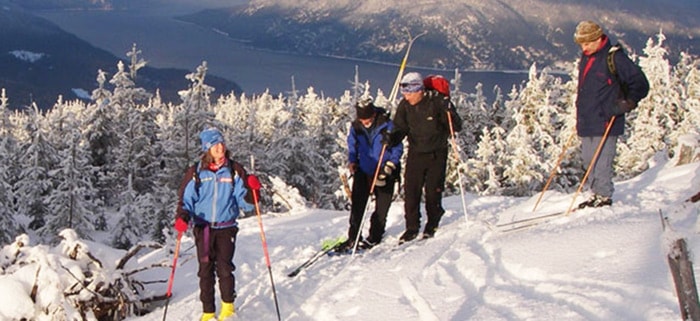Plans for Shuswap trails are on track.
More than 60 people met in Enderby at the Splatsin Cultural Centre to update work on the Shuswap regional trails strategy.
“We have a responsibility to speak for the animals and plants,” said Splatsin Coun. Lawrence (Randy) Williams.
“They depend on us to have a voice.”
Priorities for the strategy range from improved recreational access management in sensitive alpine areas, protecting vulnerable cultural sites including pictographs along trails, inventories of existing recreational use in areas like Mt. Ida to develop agreements allowing future access in the area, work on protocols for Secwepemc naming of trails and improved collaboration on mapping, promotion, and tourism development related to trails throughout the region.
As well, opportunities for new trails were identified.
“It’s the process of working together that’s important,” said Neskonlith Coun. Louis Thomas, who is championing improved pedestrian paths to connect Salmon Arm with the Secwepemc communities west of the town centre.
During the roundtable, small group discussions gave direction to sub-regional planning priorities throughout the Shuswap for the coming year.
These included non-motorized, motorized, and blueway paddle trail projects, monitoring and repair needs, areas of concern, and future recommendations.
Priorities were affirmed like the growing opportunity for active transportation planning with current highway twinning projects, and the Sicamous to Armstrong rail trail connecting with the Okanagan south to Osoyoos, and the West Bay Trail connecting the communities of Salmon Arm, Neskonlith, Adams Lake, Little Shuswap and Tappen.
“I continue to support this work because of the respect and relationships that have been grown,” said Bonnie Thomas, executive director of the Switzmalph Cultural Society.
A report was presented by systems ecologist Barry Wilson on the cumulative effects assessment model for helping to make more thoughtful decisions about complex land management as a group.
The process helps bring information from a wide range of different values together to reflect potential scenarios over time.
“It ensures the environment is a core part of the decision making, but also factors in social and economic factors along with historic data,” said Wilson.
The Shuswap Trails roundtable is also exploring how to include trail planning assessments.
“The Shuswap Trails roundtable is the personification of communities coming together for the greater good of their watershed,” said Wilson, who has been working with Secwepemc leadership using the assessment tools.
For more information on the Shuswap Regional Trails Roundtable, e-mail info@shuswaptrails.com or call 250-832-0102.
Copies of the Shuswap regional trails strategy, overview mapping, background documents, and work plan updates can be found at www.shuswaptrailalliance.com.
